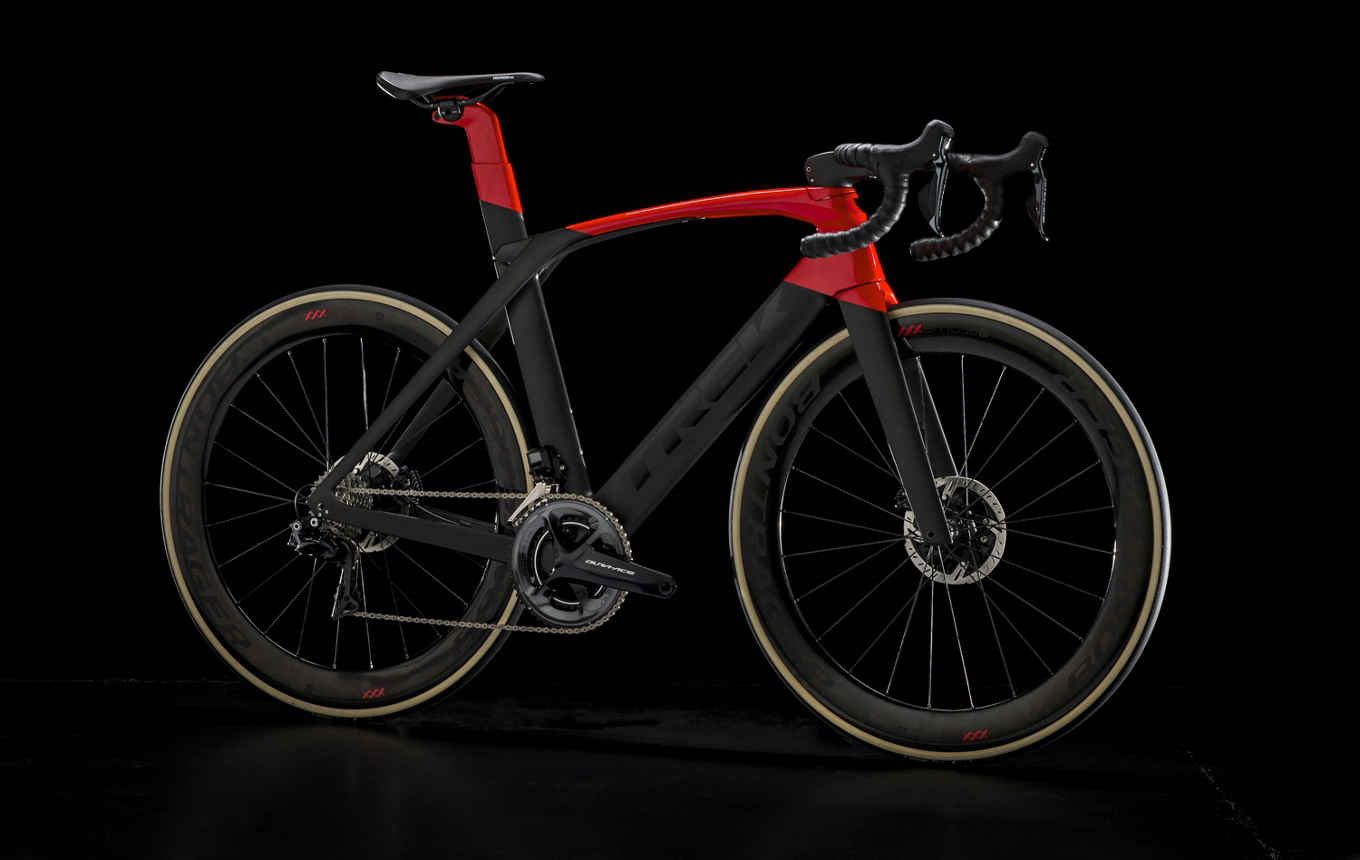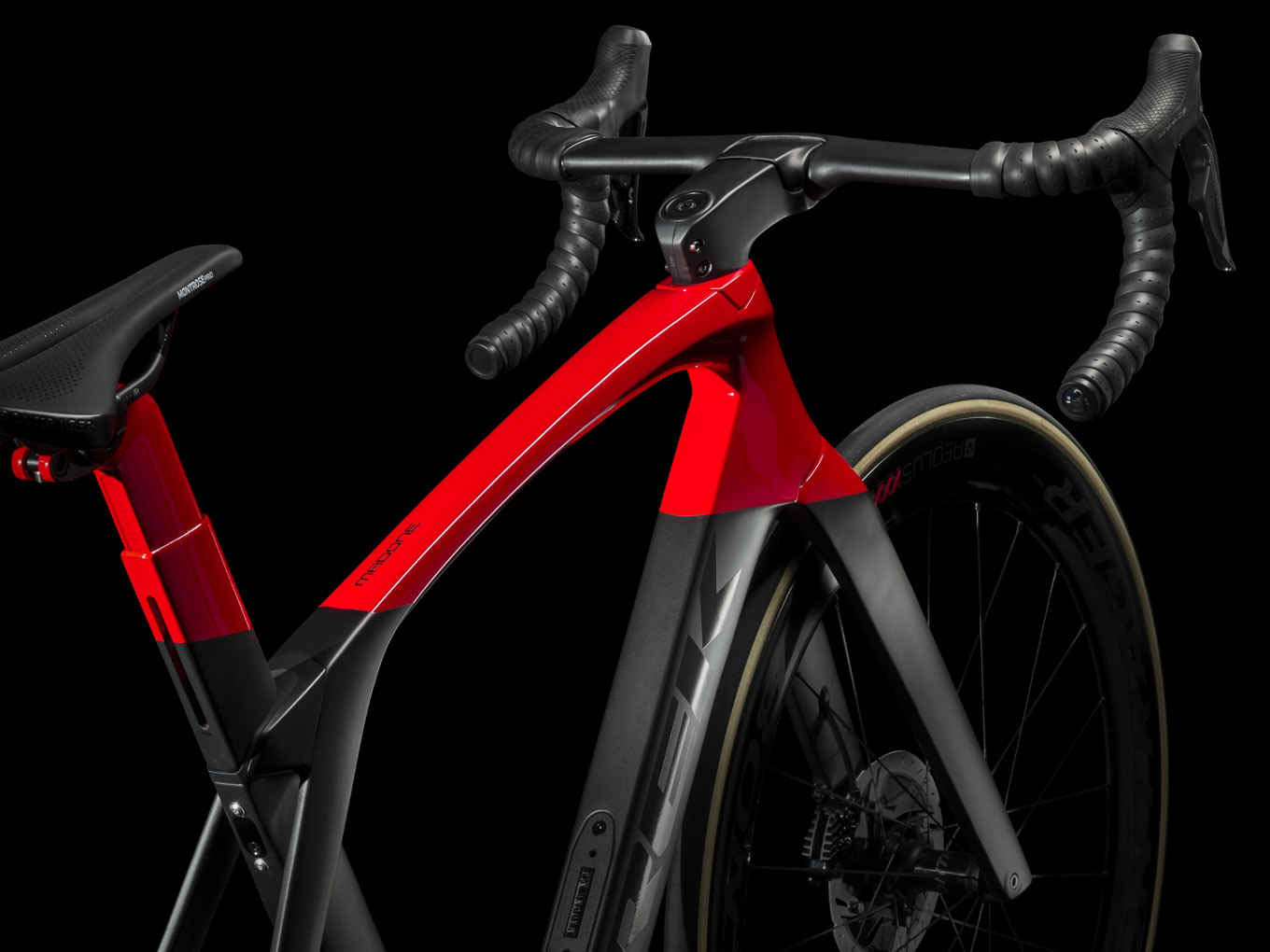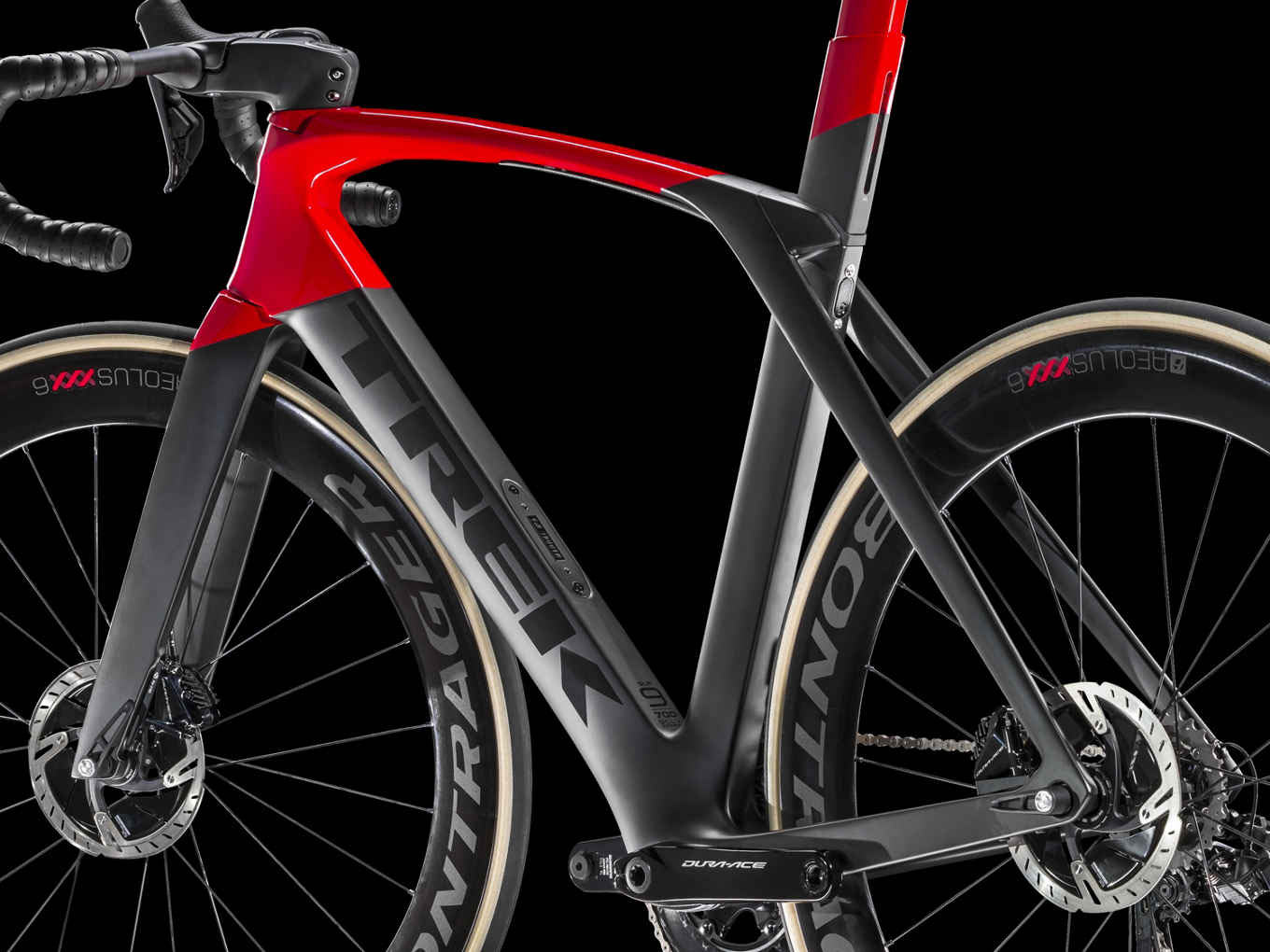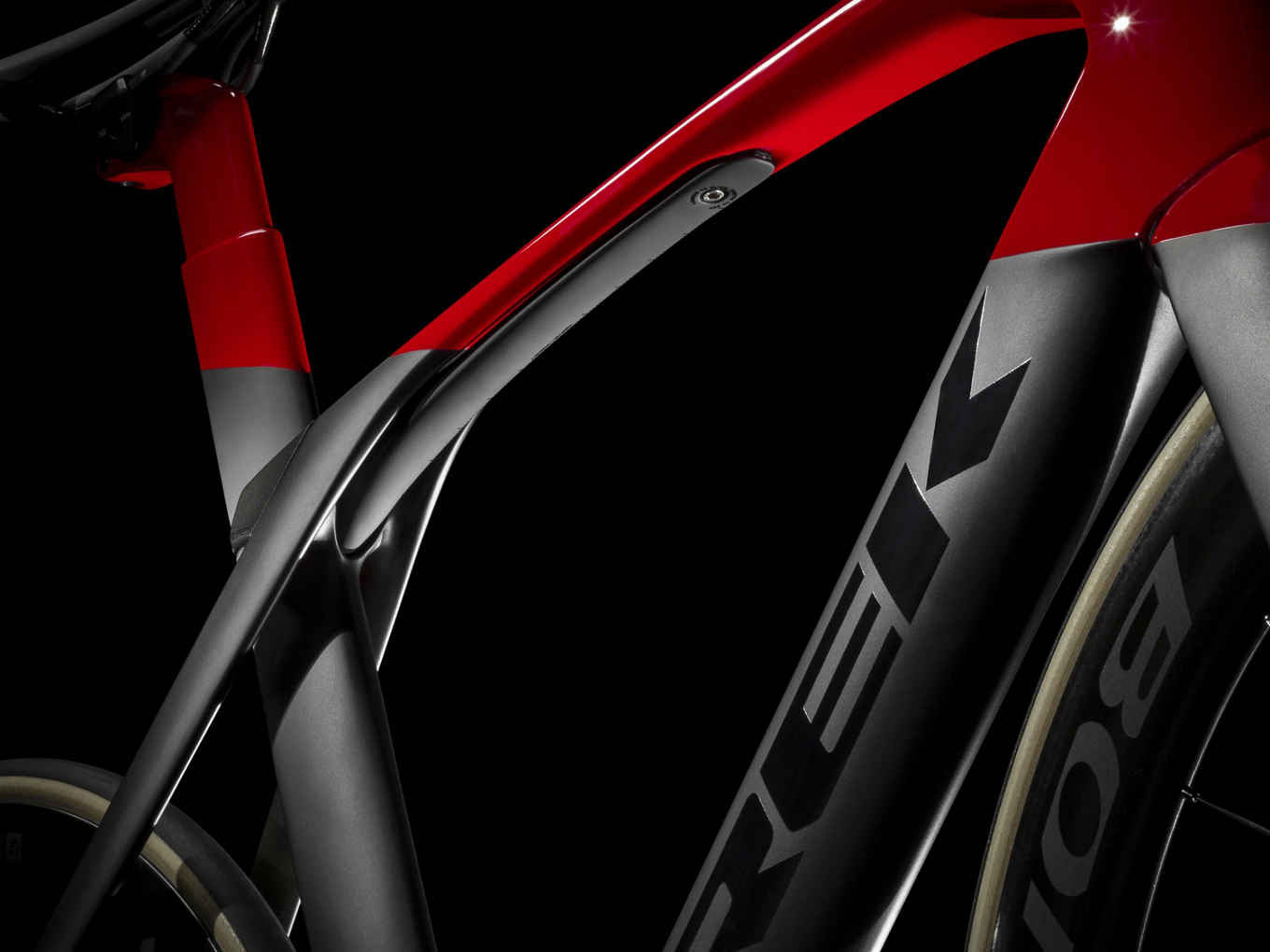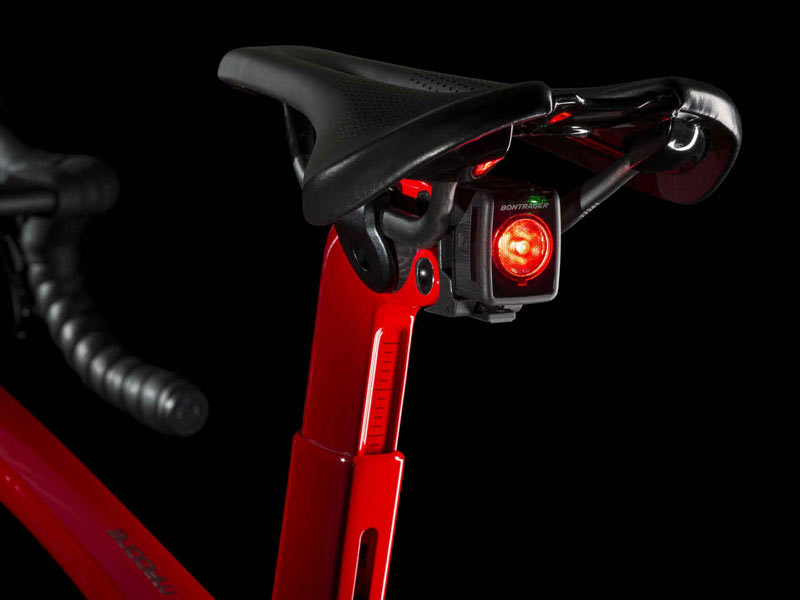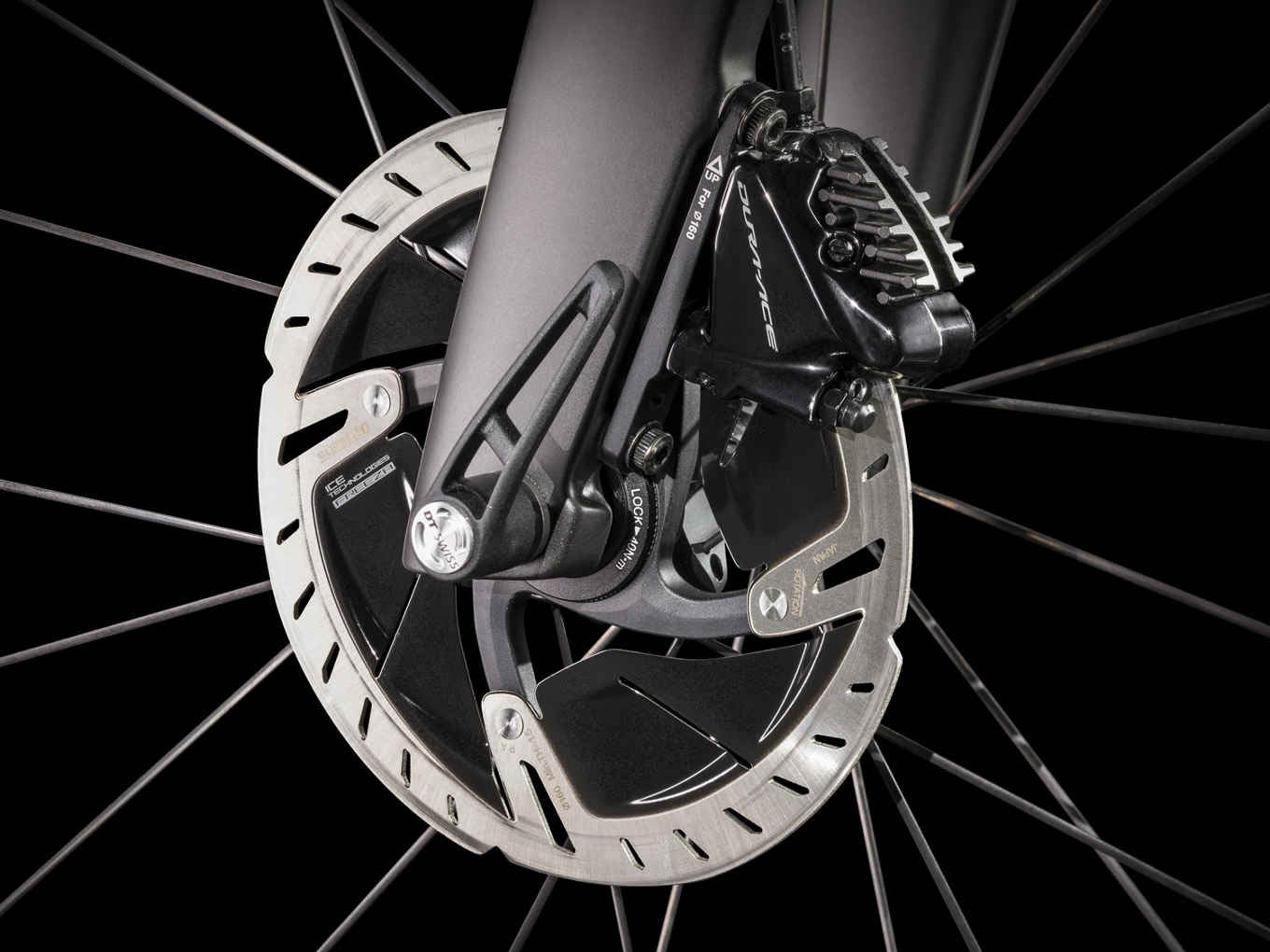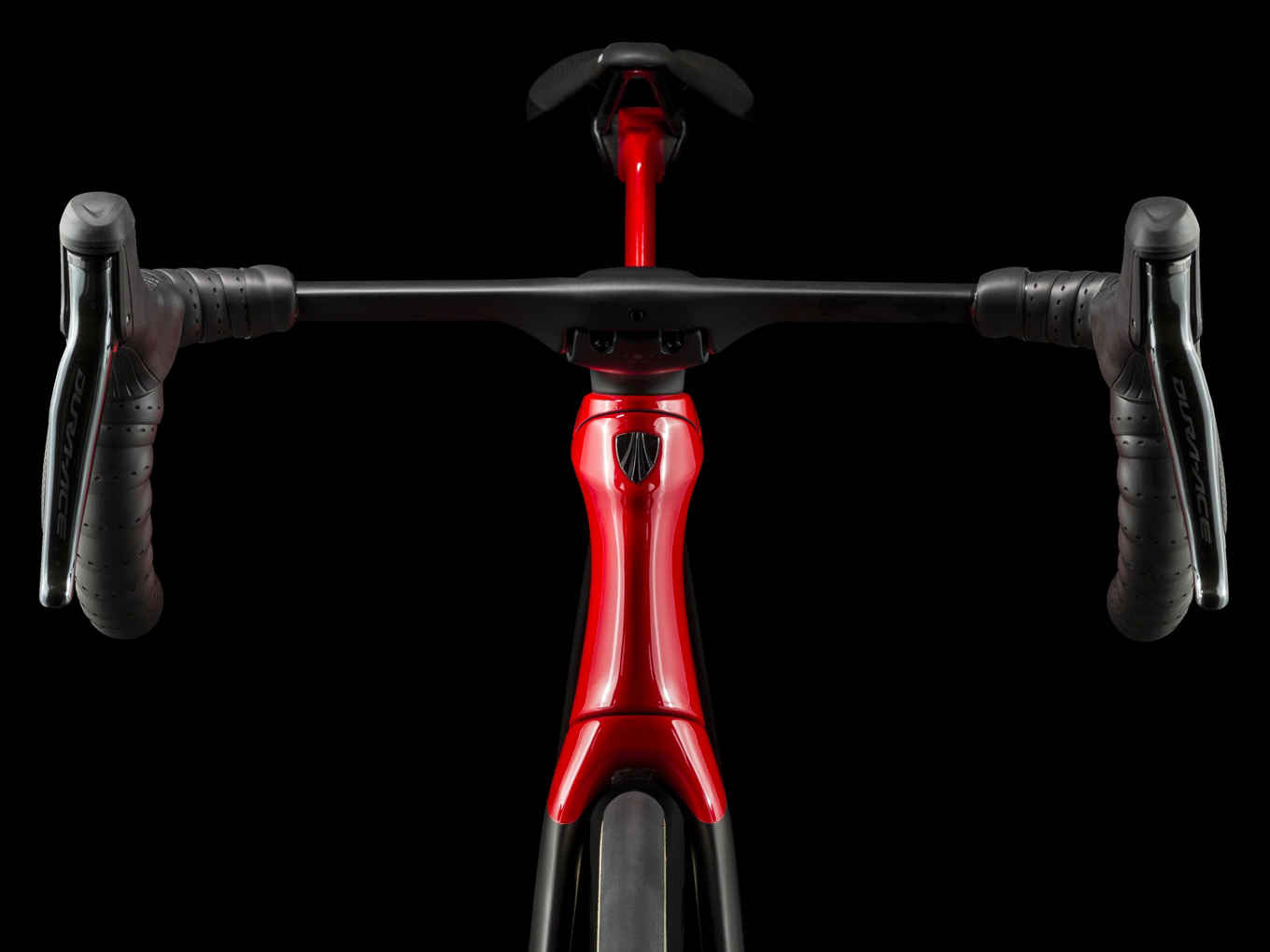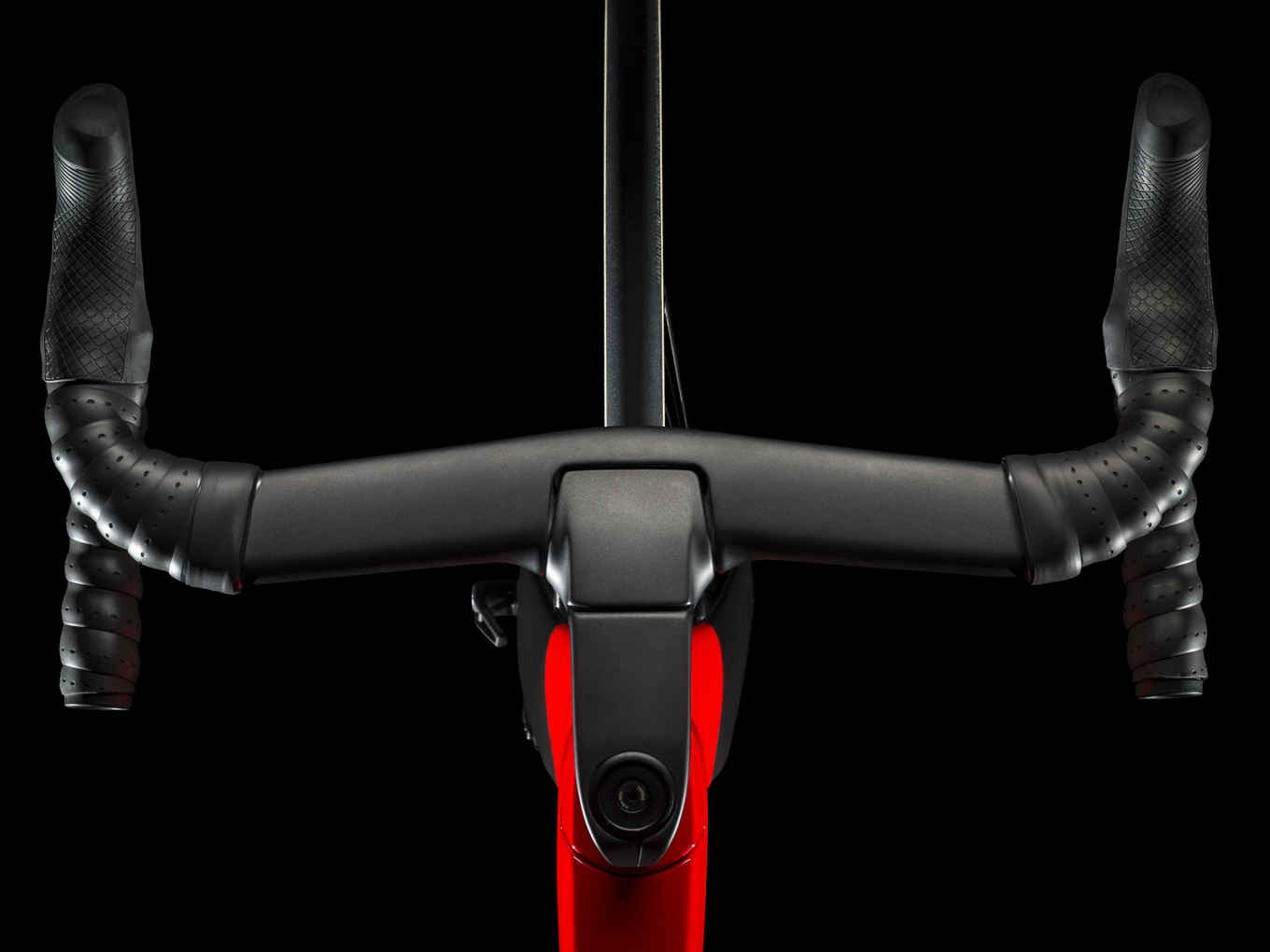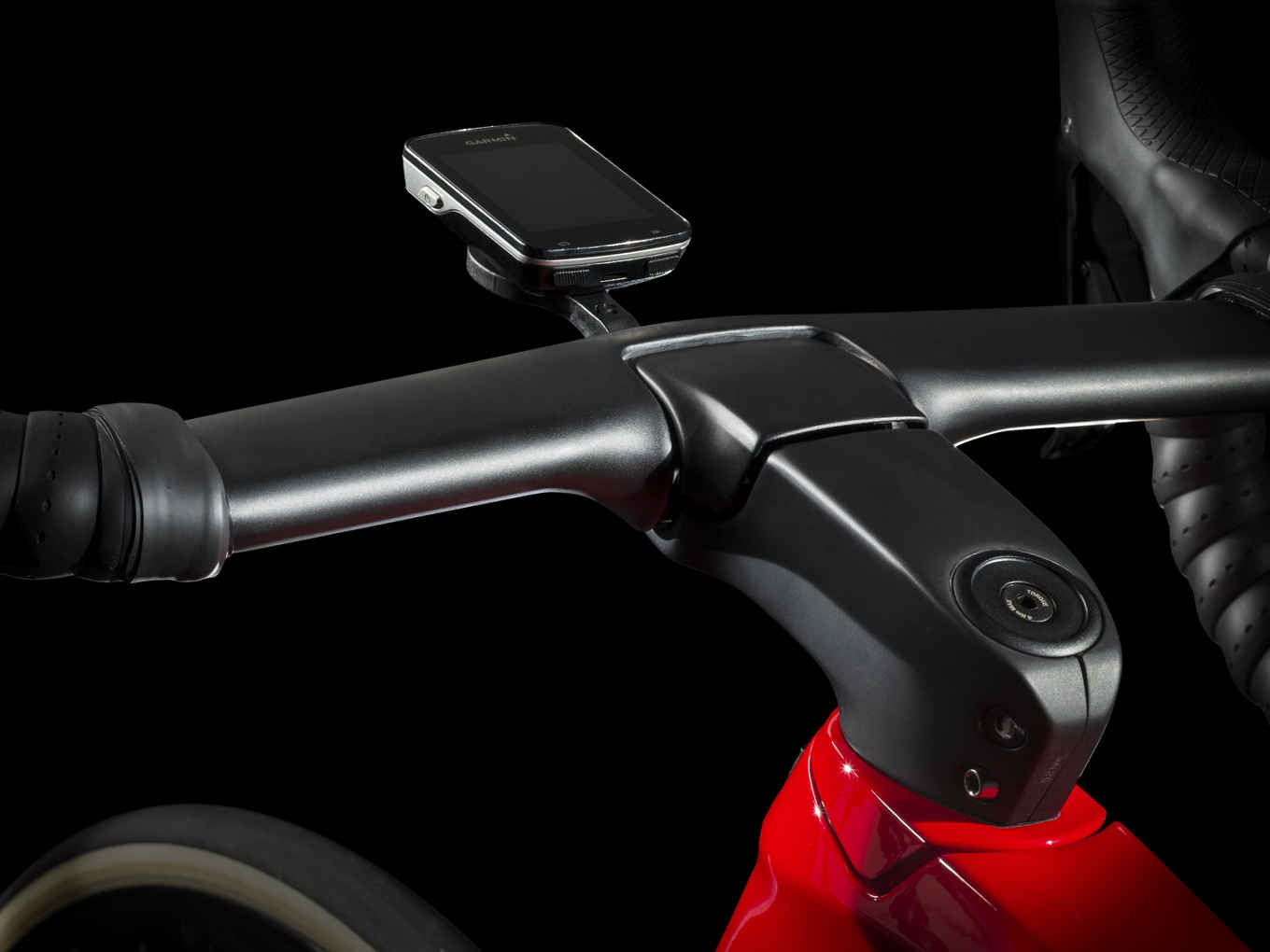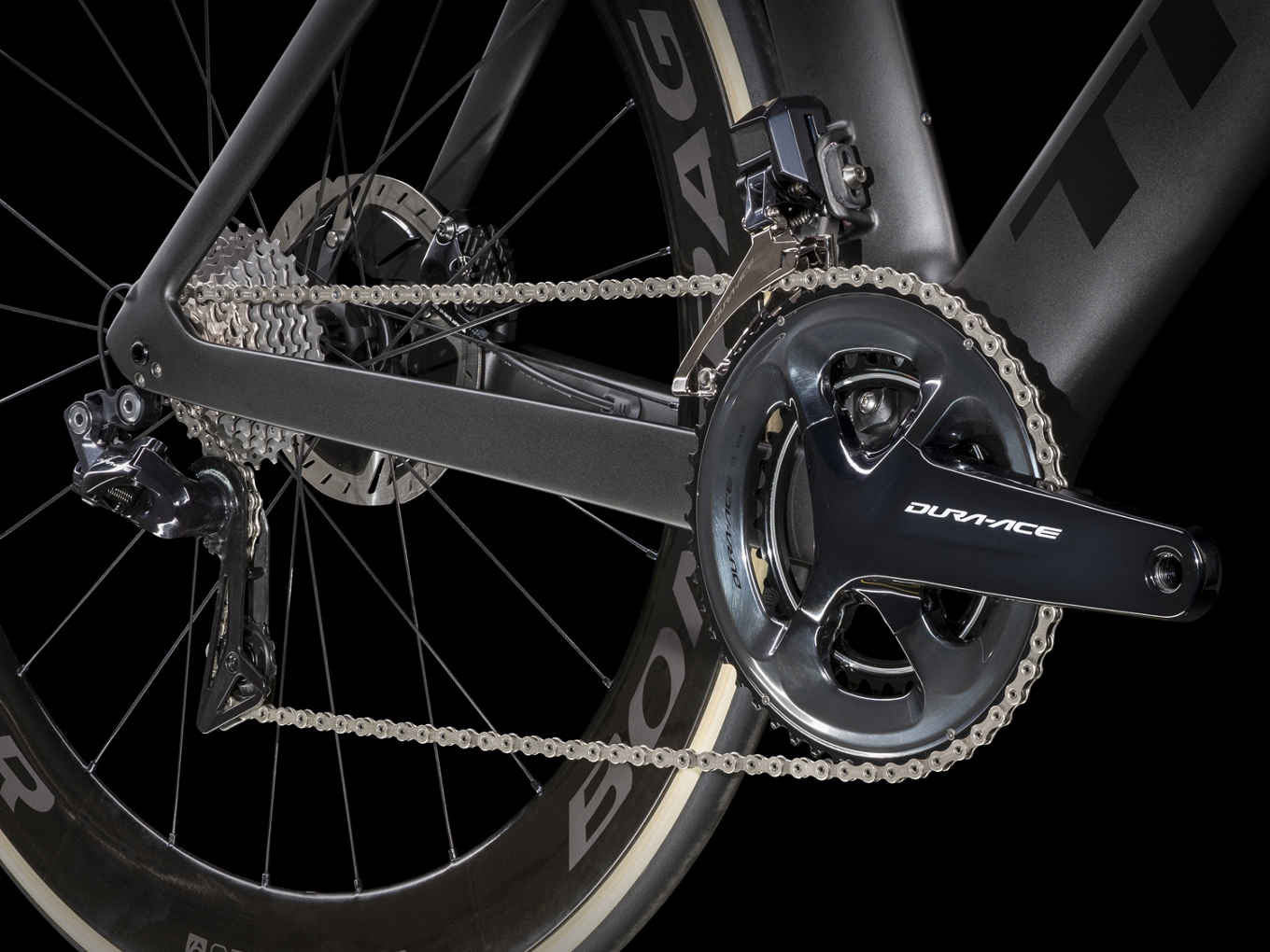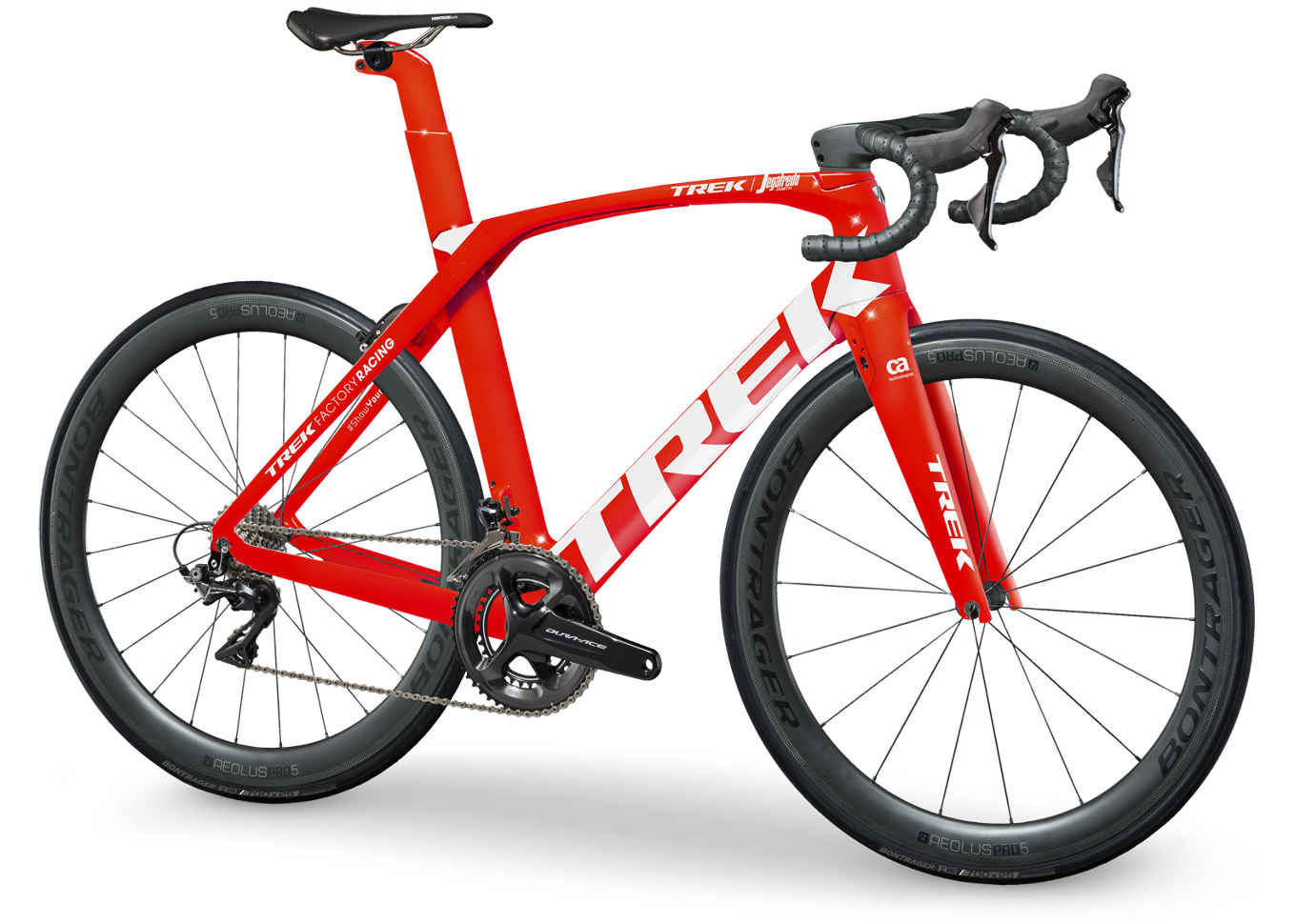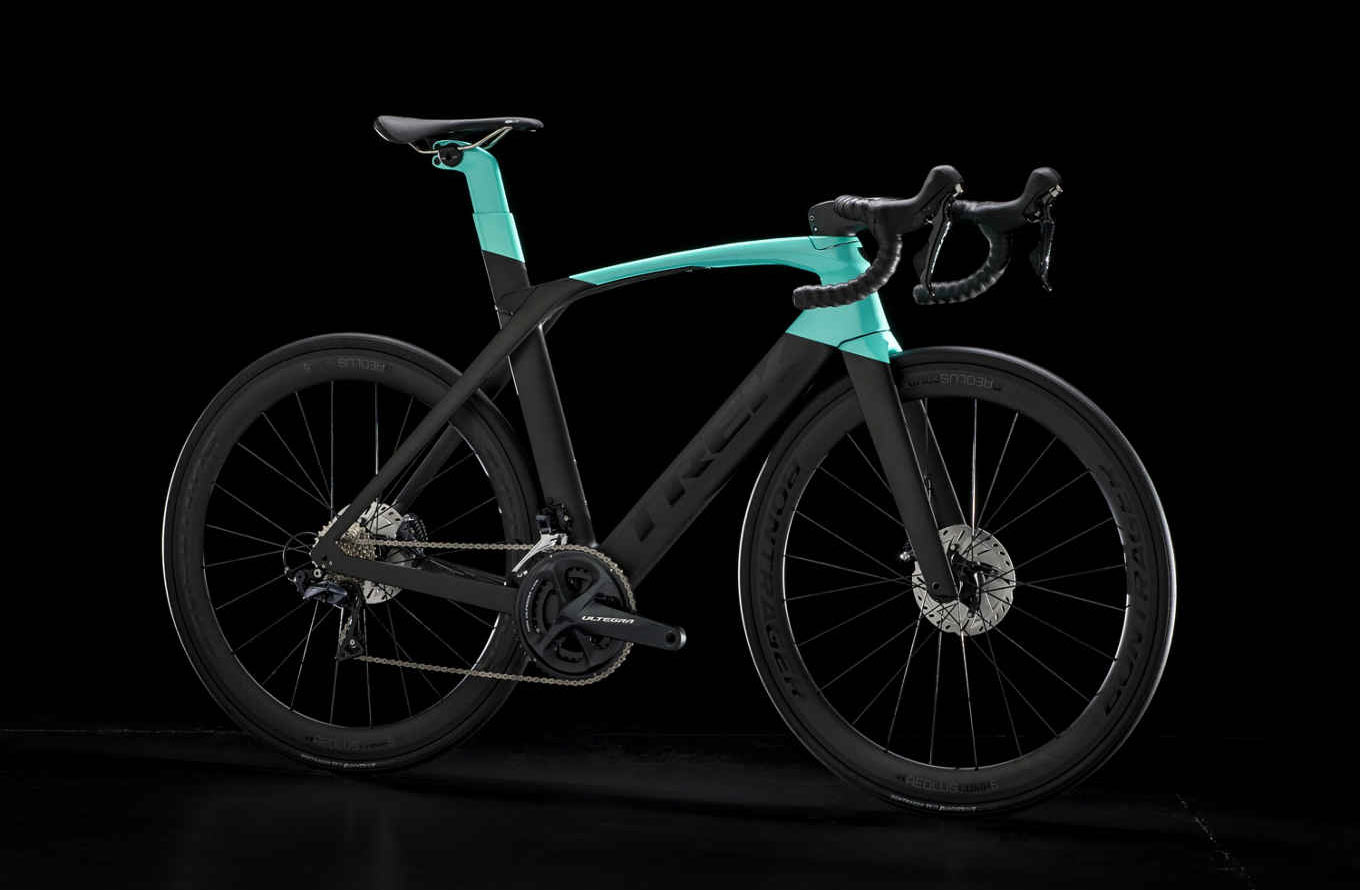The Trek Madone has a legacy of being their top-level, do it all race bike. The prior iteration added aerodynamics to the mix, but left the Emonda as their “light weight” climbing bike, and the Domane as their more compliant fondo and endurance road bike. Now, the 2019 Trek Madone Disc looks to package the best of all of those models into an all-new category killer. It uses an IsoSpeed seatmast design, integrated cockpit parts and shapely tubes, and a new layup to reduce weight. Then, they considered fit and rider comfort. Here’s how it all comes together…
The top level Madone SLR 9 frame uses 700-series OCLV carbon, their lightest, strongest material. It’s molded into a KVF shape on the downtube and elsewhere, which is a Kamm Virtual Foil. Essentially, it’s shaped to keep the air moving smoothly over the tubes and off the back, reducing turbulence and separation.
Even with all the added comfort features, they wanted to keep the complete bike weight at or under the weight of a comparable 2014 Madone. Target weight was 7.5kg, which they managed to beat with an unpainted frame built with a slammed stem and Shimano Dura-Ace Di2 hydro group and Bontrager wheels and tires. Frame weight, unpainted, comes in at 870g (claimed). The seatmast adds 151g, and all IsoSpeed hardware, derailleur hanger, seat clamp and other bits add about 80g. The interesting part? There’s a disc brake version, too, and it weighs in at 885g…15g heavier than the disc brake model.
Comfort comes from a new IsoSpeed design that rotates the compliance parts into the top tube to improve aerodynamics. The bottom of the seatmast is connected to the beam running under the top tube, which is decoupled from the rest of the top tube with an elastomer. As the seatmast flexes rearward, the beam under the top tube flexes like a leaf spring. You can limit how much flex it allows by sliding the coupler back further, or move it forward for more flex. The back of the seat tube has additional adjustments to let you fine tune the rebound characteristics. They say this new design makes the compliance more uniform across frame sizes, too.
The upper seatmast slides into the lower section and has height adjustment, plus a nifty light connection for their Bontrager lights. The saddle clamp itself is a beautiful single bolt design that wedges a round clamp inside…loosen the bolt and you can slide the seat fore/aft and rotate it, then tighten it down to lock everything into place.
2019 Madone Aerodynamics
The addition of disc brakes, a revised fit, and more measures for increasing rider comfort meant they had to redesign the bike to match the prior versions aerodynamics. Within their target wind angle range of +/- 12.5º yaw (which are the angles they say are most common when riding), they kept the new Madone wishing 14g of drag of the old one at a normalized 30mph (with a mannequin and 2 water bottles). That’s impressive considering the old one had rim brakes shielded from the wind.
Besides just the rotors, it’s also the cables and hoses that cause drag. Notice there’s no front brake hose exposed to the wind? That’s because it’s routed inside the fork’s steerer and through the leg, with a bonded tube inside to make it super easy to install or replace. Other cables, wires and hoses are routed through there as well, sending everything inside the frame all the way until they’re needed. The headset spacers are custom shaped to match the stem’s profile and maintain the aerodynamics. And they use a split design that clips together so you don’t have to undo any cables or wires to add or remove them.
Prior models were offered in one of two fits: H1 and H2, with more or less aggressive posturing for the rider. For this one, they split the difference and created an H1.5 fit to cover the vast majority of riders with a single geometry. Besides the obvious economies of scale benefits, this also let them further refine the aerodynamics around a single frame shape. They also improved ergonomics by sweeping the bar backward and giving it a broad, flat top to rest your hands on.
To increase the fit opportunities, they revised their integrated bar and stem to have 40+ positions using different sizes and spacers. The handlebars have a split clamp section, with the main part hidden inside the stem and the face of the bar putting a more aero shape in front of the stem.
The downtube contains a port for electronic group junction boxes or control centers. The top model, shown here, gets full Shimano Dura-Ace Di2, Bontrager Aeolus X X X 6 wheels and comes in at $11,999 to $12,499 depending on options.
Trek Madone Video Overview
Because it’s fun watching people ride bikes.
2019 Trek Madone Road Bikes
Sitting directly below the SLR 9 Disc featured above is the SLR 8, a rim brake version using the same 700-series OCLV carbon. This one gets a Trek-Segafredo team replica paint scheme, Dura-Ace mechanical and Bontrager Aeolus Pro 5 tubeless ready wheels and tires for $7,499-$7,999.
Besides the braking method, one key difference between the models is tire clearance. Rim brake models are recommended with 700×25, but the disc brake bikes get approval for 28mm tires.
Below that sits the SLR 6 Disc, available in women’s (above) and men’s (below) versions. They share the 700-series frame, but step down to Ultegra mechanical for $5,999-$6,499. Each of the bikes shown here come in four different colorways, and you can get them through Project One to customize the build and colorway.
It’s not just Trek that’s made the move to disc brakes for their top-level race bikes. Check out the other new aero road bikes from Specialized, BMC and Cannondale that’ll likely be racing alongside this Madone in the Tour de France.
